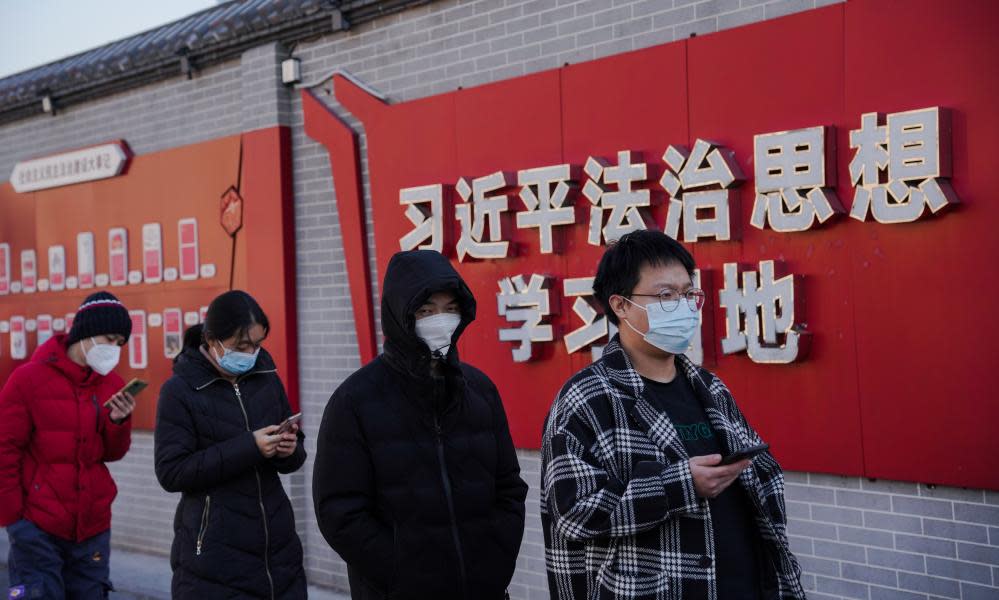Is China finally about to relax its zero-Covid policy?

In the strongest sign so far that China is rolling back on its long-running zero-Covid policy, the national health commission said that people with Covid-19 who have mild or no symptoms can quarantine at home. The directive also instructed officials to halt temporary lockdowns and ended testing and health code requirements for people entering Beijing.
Is this the end of China’s “dynamic zero-Covid” policy?
This is a significant step in China’s iron-fisted “war” against the Covid pandemic. But although officials have further eased restrictions and stopped using the term “dynamic zero-Covid” in their public speeches, many people in China are reporting that restrictions still remain in many places. Experts say it is a process that will likely take several months.
“The ‘dynamic zero-Covid’ policy is still in place officially, though most of the most hated restrictions have been lifted. This is getting close to zero-Covid in name only but there is still scope for restrictions to be reintroduced if necessary,” said Prof Steve Tsang, the director of the Soas China Institute at London University.
Prof William Hurst, deputy director at the Centre for Geopolitics at the University of Cambridge, said: “What we have seen in the past several days is a rollback of some of the harshest baseline measures in some places … We’re also seeing a gradual shift in rhetoric coming from the centre.” He said measures and policies will be “very gradually rolled back bit by bit” and there will also be “some period of back-and-forth following that, during which we’ll see some measures come back before being removed again.”

Hurst said the new measures suggested the authorities could be aiming to ease most restrictions by Chinese New Year on 22 January.
Does it mean all lockdown restrictions have been lifted?
No. Negative PCR tests were still required for entering many places, such as nurseries and schools, hospitals, nursing homes, bars and other entertainment venues.
According to the National Health Commission announcement, if a positive case is found, officials should adopt a “quick lockdown and quick lifting” approach. “High risk” areas around the infected patient and close contacts would still be placed under lockdown, but if no cases are found within the next five days, restrictions should be lifted.
Related: Covid is weakening, China state media claims, as major cities lift lockdowns
Why would it be difficult to completely abandon the “zero Covid” policy all at once?
Even after the Chinese government announced on 11 November the easing of some quarantine restrictions, many localities continued to enforce lockdowns and restrictions. This is mainly due to two factors: firstly China’s top-down power structure means local officials are often made scapegoats for mishaps, so to avoid surging cases, local officials would prefer overly strict implementation of virus control policies. Secondly, the PCR tests and the ubiquitous lockdowns have created chains of vested interest groups who reap benefits from the emergency measures and would be hesitant to let go of these gains.
Is this a response to the nation-wide protests which happened over a week ago?
Not officially, as the government has never linked the easing of measures to the protests, positing it as a scientifically based decision that was made based on the “time and situation” and “optimising” prevention and control measures to “accurately target” the virus while facilitating a return to normal life. But Wednesday’s announcement appeared to address some of the public anger over a deadly fire in Urumqi which boiled over into the multi-city protests. The new edict “strictly forbids” the blocking of fire exits and said the public’s access to medical treatment and emergency escape should be unobstructed by covid restrictions.
Health experts have warned that China’s population could have a sharp rise in infections and deaths in the subsequent wave, given the low vaccination rates among the elderly, the unavailability of more effective foreign vaccines and low natural immunity from the lack of exposure to the virus. Given the Chinese government’s low threshold of tolerance for increased cases, China experts say the return of some form of restrictions would be likely, albeit smaller in scale than in the past.
“This would almost certainly lead many to want to reimpose some degree of restrictions and I would be surprised if they didn’t do this in some form of back-and-forth dance for some time after any general reopening,” said Prof Hurst.
“Further lockdowns are likely to be locality specific and thus unlikely to generate the general anger that showed over a week ago,” said Prof Tsang.

 Yahoo News
Yahoo News 
